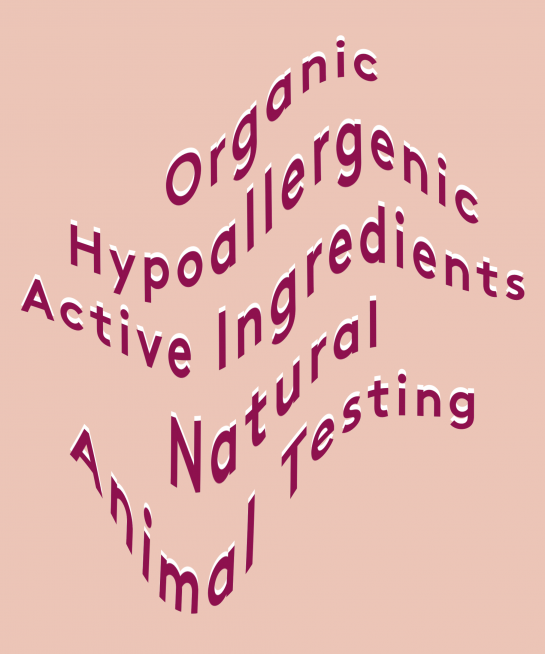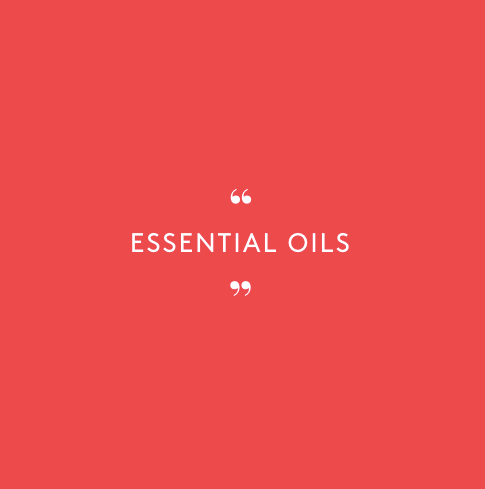
The beauty world can be a bit of a minefield. New products are launched daily, and along with them comes a whole new vocabulary. Words like hypoallergenic, non-comedogenic, natural and organic are some of the most frequently used terms to describe the ingredients in products. But do we know what they actually mean?
Dr. Anita Sturnham, GP, put it this way: “You wouldn’t eat a plate of food without checking what was on your plate, so you should have that same mentality with your skin care.” Read on for a no-nonsense breakdown of what some of the most common beauty jargon out there really means.

Hypoallergenic is a broad term that means a product is less likely to cause an allergic reaction. But it's in no way a guarantee.
Tracey Wilmot, the training and education director for Murad, explains: "Allergies and irritations are a complex response, which is unfortunate but can be anything from natural or synthetic ingredients, preservatives, fragrances, and a multitude of other reasons according to our unique and individual makeup and lifestyle. No company can claim that a product will not cause a reaction and there are no allergy-proof products."
There is also no industry or legal standard governing the use of the term hypoallergenic, so if you see a product labeled this way, take it as a guide, not a guarantee.

You’ve probably seen this term on products meant for blemishes, acne and oily skin. Wilmot says, “Comedo/comedones is the word for blackheads, so non-comedogenic means that the formula is designed not to clog pores, but it does not guarantee the product won’t cause breakouts.”
However, there are no guidelines in place for regulating a product’s claim to be non-comedogenic. If blackheads and blocked pores are a concern for you, make sure you are cleansing thoroughly day and night. Avoid heavy, long-wear foundations if possible and look for gels or water-based skin products rather than rich or oily creams.

"It's a research study conducted in order to see if a product is safe and effective under strict scientific standards," says Andrea Pfeffer, the founder of the Pfeffer Sal clinic in London.
In regard to just how meticulously participants are monitored during a trial, Pfeffer says, "The product will be tested rigorously under exact industry standards to prove that it performs as it promises to. Be that reducing the appearance of fine lines, or boosting hydration, these trials are where that data is received and recorded. These trials are done to prove the results of the products. They're focused on data, efficacy and safety."

Ever seen a brand make a claim like: “94 percent of women said their skin looked healthier after using [insert product name]”? Well, that probably means the brand has carried a consumer trial.
How do clinical and consumer trials differ? Pfeffer explains: “Consumer trials are the introduction of a product to a chosen group of consumers and are a way for them to try a new product before they decide to purchase it. It also allows the business to gauge the potential success of products before committing to a full launch. They are not done for data and proof but more for spreading the word about the new product.”
A consumer trial isn’t based on the scientific evidence of results but rather on the response from potential customers. The pool of people tested varies, too. “Some companies test nationwide or just a selected group of 50, making it hard to determine the scope of skin conditions who will try the product,” adds Pfeffer. “The easiest way to remember this is that clinical trials are fact. Consumer trials are opinion.”

Over the past decade, we’ve seen a rise in demand for natural beauty. Dr. Sturnham defines the term: “A product is considered ‘natural’ when it contains ingredients that are sourced from nature, rather than created synthetically in a lab.” However it’s a notoriously grey area of the industry, as there’s no hard or agreed-upon definition or single governing body.
For a product to be advertised as natural, a brand needs to provide evidence that just 5% of its ingredients are natural. This doesn’t account for the rest of the formulation and as Sturnham explains, it often tells us very little about the ingredients we’re buying into: “Generally, if a product lasts more than three weeks after the date of opening, it is unlikely to be 100 percent natural, as it will require chemical preservatives to maintain its stability.”
With no regulatory body to govern the use of terms like organic and natural, Dr. Sturnham details how confusing such words can be to consumers: “This category of skin care is poorly monitored and even products which are labeled as such, are often only containing a small percentage of organic ingredients. We are not advised if pesticides or herbicides are used in the cultivation process, if the ingredients are sourced from the environment or cultivated in a lab and if the ingredient is a synthetic version of the natural ingredient.”
The U.S. Department of Agriculture (USDA) provides the “USDA Organic” seal of approval. That seal looks exactly the same when placed on a product’s label, even though it can mean three different things: 100 percent organic, which is only organically produced ingredients other than water and salt; organic, which is 95%; and “made with organic ingredients,” which is 70 percent approved ingredients, and can be marketed like “body lotion made with organic lavender, rosemary, and chamomile.”

Alcohol in skin care falls into one of three categories: simple, fatty, or aromatic.
Fatty alcohol, such as cetyl alcohol or caprylic alcohol, works to prevent skin's moisture loss and acts as a thickening agent, whereas aromatic alcohol, typically known as benzyl alcohol, is used in very small doses in fragrance as a solvent.
Simple alcohol is where the problems lie. Used under names such as isopropyl alcohol and denatured alcohol (alcohol denat), Mirela Mitan, CEO and founder of MMXV INFINITUDE, details the adverse effects it can have: "If used in a high concentration, this alcohol may weaken the skin barrier function and increase skin dryness." If dry skin is a concern, look for products free from simple alcohol.

Succinctly summed up by Pamela Marshall, a clinical aesthetician and cofounder of Mortar & Milk, an active ingredient is one that is “biologically active – able to biologically affect the skin.” Usually, these are at the top of the ingredients list and will often have a percentage listed on the packaging. (For example: 10 percent glycolic acid.) AHAs, PHAs, retinol, and vitamin C are all active ingredients.
The efficacy of an active ingredient is greatly dependent on the pH levels in the acids, as Marshall clarifies. “The lower the pH, the more ‘active’ a product will be, but that can also mean that it can be more irritating to some skins.”
A tip – don’t mistake a high percentage in ingredients like glycolic acid for a sign of increased effectiveness. Marshall says: “Percentages are a misnomer. A serum that claims to be 50 percent glycolic acid is far less effective than a serum that has 10 percent glycolic acid, simply due to the pH levels.”

"Essential oils are simply distilled oils derived from a plant that have the 'essence' of that plant. They have been used for healing for thousands of years and are currently being used in many skin-care products for their healing ability," Marshall explains. They're common ingredients prevalent in natural skin-care brands – frequently used examples include lavender oil, ylang ylang and rosehip oil. But just because they're derived from a plant doesn't mean they're harmless; they can be irritating to some, so it's important to spot test them first.
But where there's an essential oil, there's a carrier oil working alongside it, which determines how it penetrates the skin. "Not all essential oils are created equal," she adds. "Their carrier oil is very important to their absorption, so if the carrier oil is too heavy, the essential oil will not penetrate properly.
By: Louise Whitbread